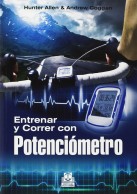When to update your FTP
FTP is one of the basic parameters when it comes to power training. Having it updated to our state of fitness guarantees that we apply the desired loads in each training session to achieve the objective we are looking for.

Fine-tune your power training by keeping your FTP up to date
The Functional Threshold Power or FTP is one of the basic parameters when training using a power meter as a tool to quantify the effort made since, taking this value as a reference, the different work zones are determined which allow us to establish which qualities we are working on in each training session.
FTP is a concept that was introduced by Hunter Allen and Andrew Coogan in their book Training and Racing with a Power Meter, one of the reference works on power training. It is defined as: "the maximum power that a cyclist can maintain almost constantly without fatigue for approximately 1 hour".
RECOMENDADO

Black Friday 2025 cycling bargains: save on Garmin, POC, Maxxis and more

Black Friday Garmin 2025: the ultimate guide to choosing your GPS at the best price

Which profile wheels to choose according to the area where you live: mountain, flat or coast

How to wash your cycling clothes? 10 keys to make them always look new

Cycling can help you fight the effects of the time switch

Important keys to make your training work

From this value, not only the different work zones are defined: Z1 or active recovery, Z2 endurance, Z3 Tempo, Z4 Lactate Threshold, Z5 VO2 Max, Z6 Anaerobic Capacity and Z7 Neuromuscular Power; it is also used to develop metrics of the workload that the cyclist supports and thus to be able to show graphically the evolution of the state of fitness throughout the season.
Obviously, if the FTP reference value does not match our current fitness level, when we train we will be training above or below our possibilities with all that this entails in the form of excessive accumulation of fatigue or, on the contrary, not training enough to progress in our fitness level.
This is why it is recommended that training plans include a test on a regular basis, approximately every two months, to accurately determine the FTP value. Traditionally, it has consisted of a 20-minute test at full throttle, the value of which is multiplied by a correction factor of between 0.9 and 0.95, depending on the cyclist's characteristics, to obtain the desired figure.

Other authors, such as Joel Friel, however, propose a 30-minute test and use the average power figure obtained as the FTP value directly. Other field measurements such as a race lasting approximately one hour, like a cyclocross or XCO competition can also serve as a reference to establish our FTP, although we must be careful with the figure obtained, as in competition we often manage to push ourselves beyond our theoretical limits.
However, it is not always possible to introduce a test into the training plan as it means sacrificing other sessions in order to arrive sufficiently rested and generates significant fatigue which then has to be recovered. In these cases, there are some signs that indicate that our Functional Threshold Power has improved or worsened over the weeks.
The second case is more common, if we have not been able to train properly for several weeks due to work, injury or illness, at the beginning of each season, etc., something that we will easily notice on the bike when we see that we find it difficult to maintain power figures that we used to manage without any problem or that the averages we achieve on our usual routes are lower than what we were used to.

The opposite case is when we are improving our fitness and we find ourselves in a race, a ride or simply in a competition with our group mates where we are not paying attention to the power, achieving figures above the usual ones. Obviously, the definitive limit to decide that our FTP is higher than the one we were using would be to make an effort of one hour, for example climbing a mountain pass, at a higher average watts than the figure we have set.
Fortunately, nowadays, many cycling computers such as the Garmin Edge models and web applications such as Strava, Training Peaks or even cycling simulators such as Zwift are able, based on the stored history, to calculate our power curve with the best values obtained in different time intervals and, based on this information, determine automatically, and quite accurately, what our FTP is without the need to perform a test, as long as we have made an effort of sufficient intensity and duration for the calculation to be valid.